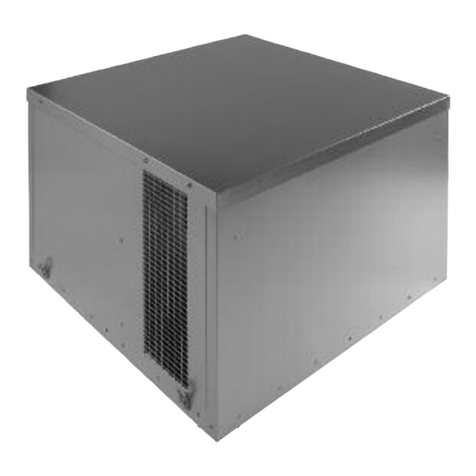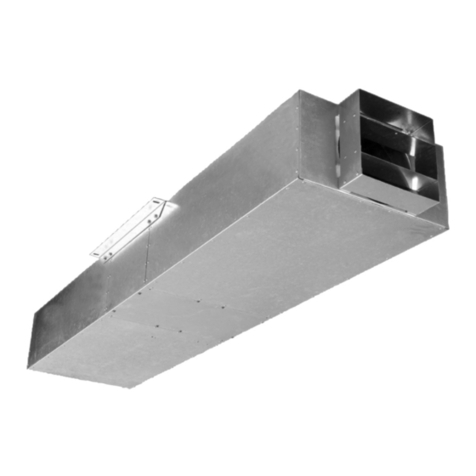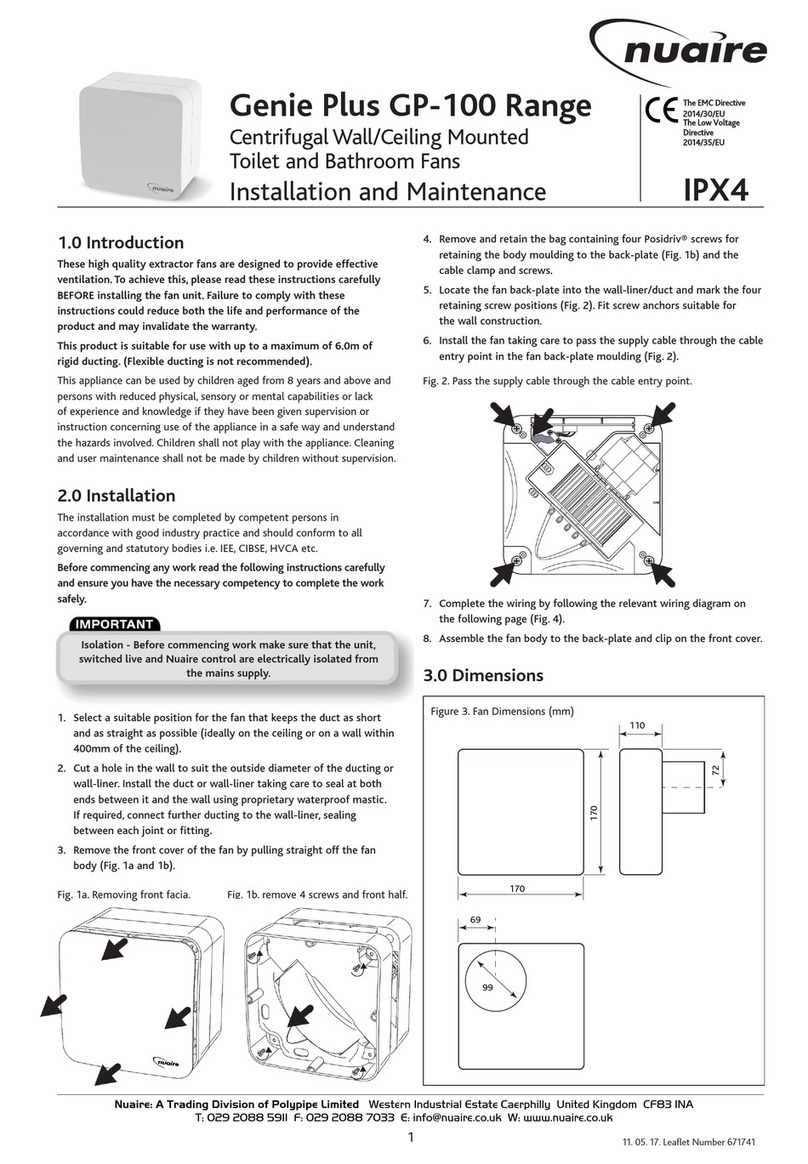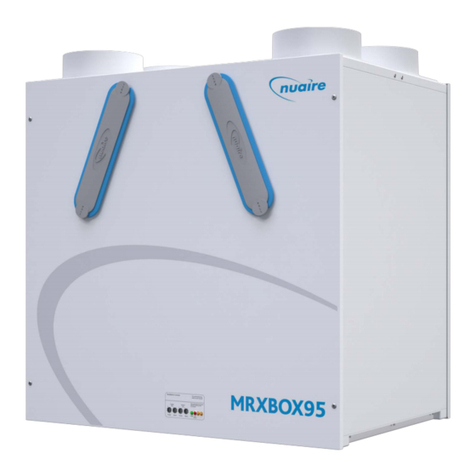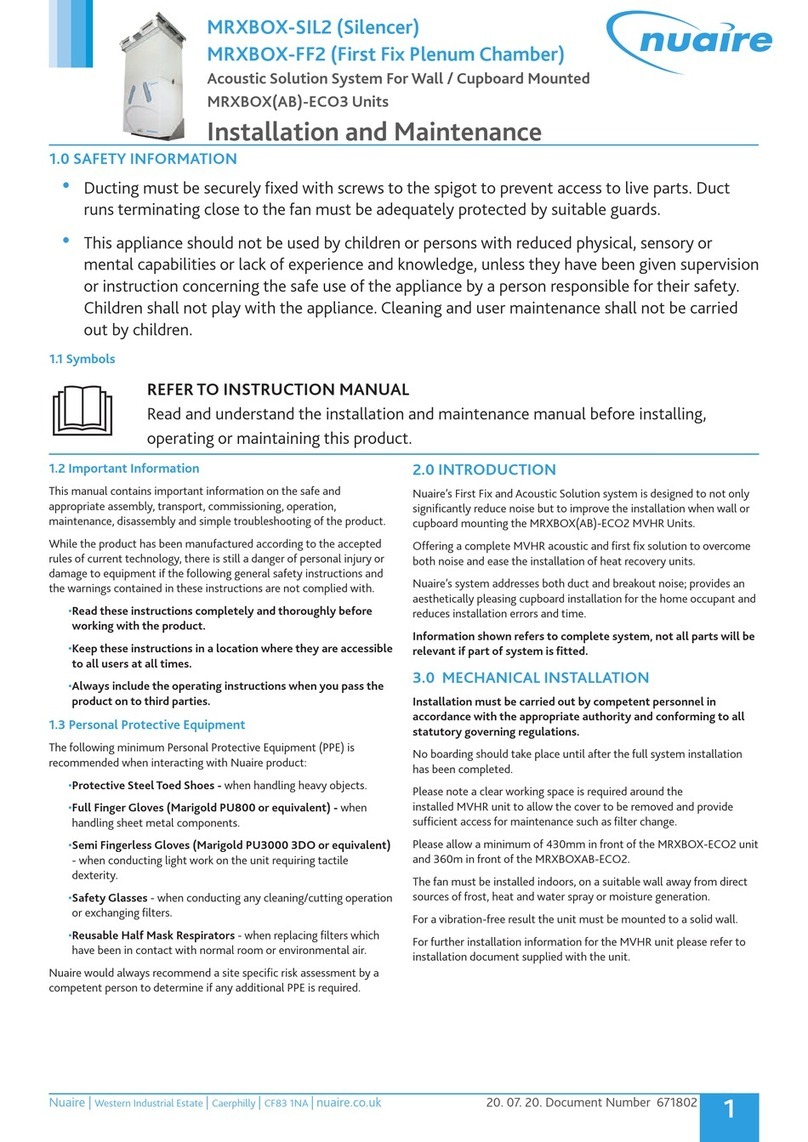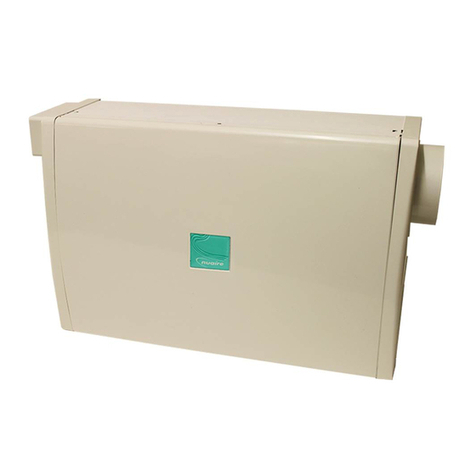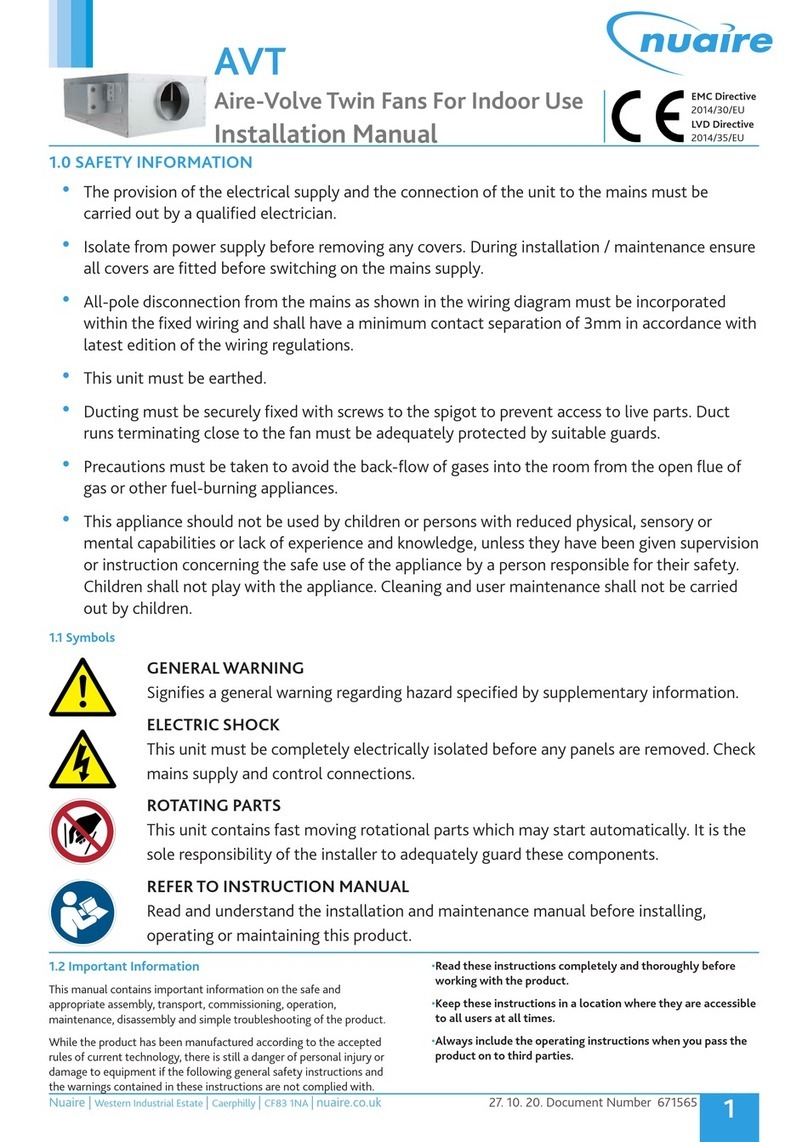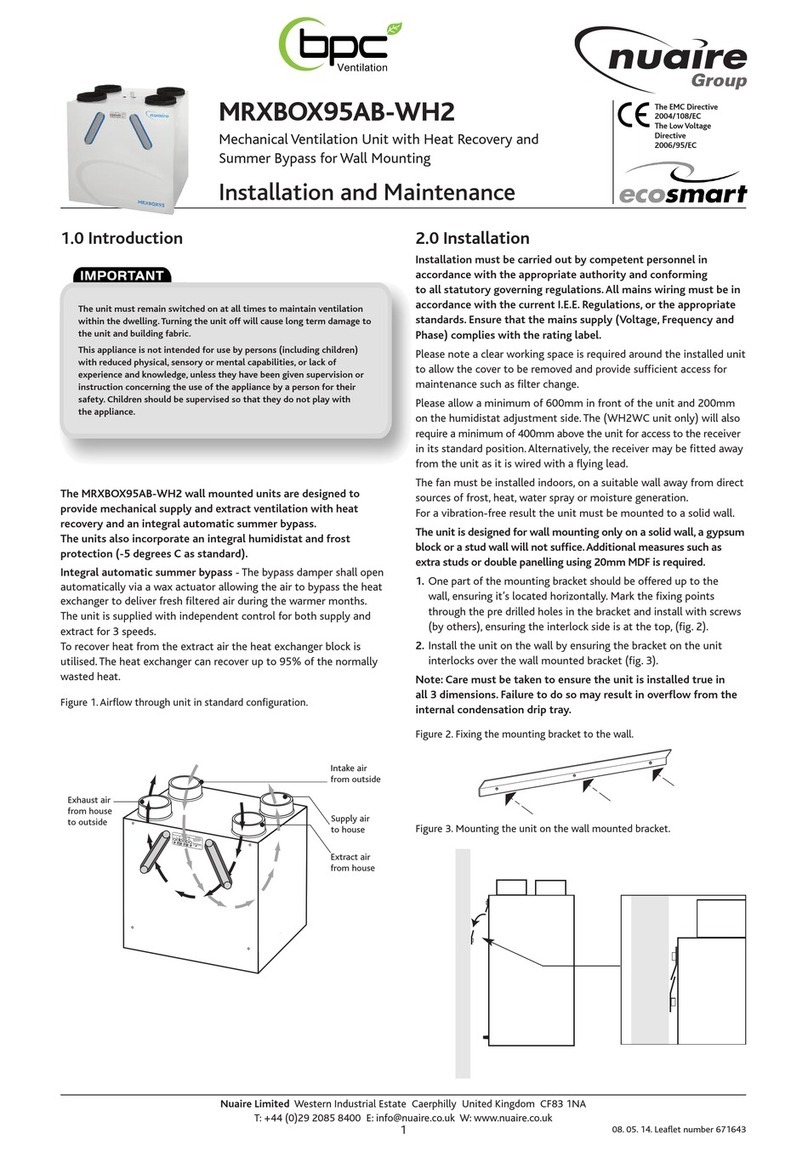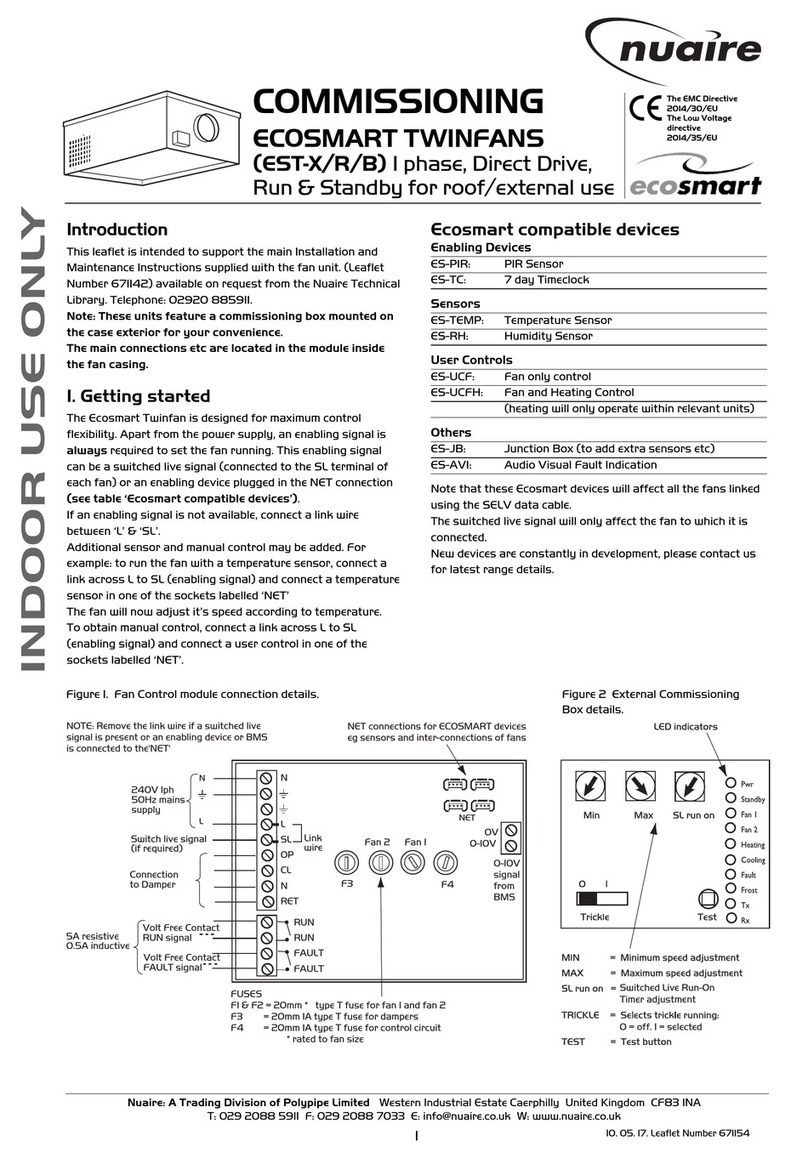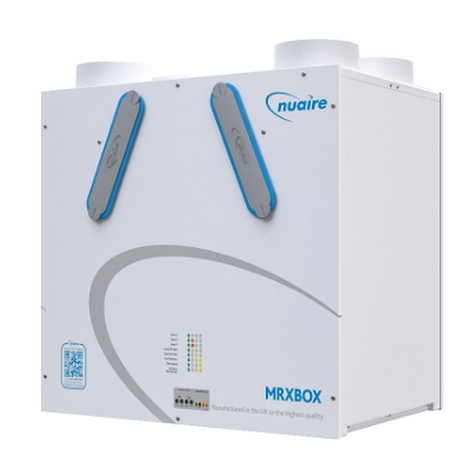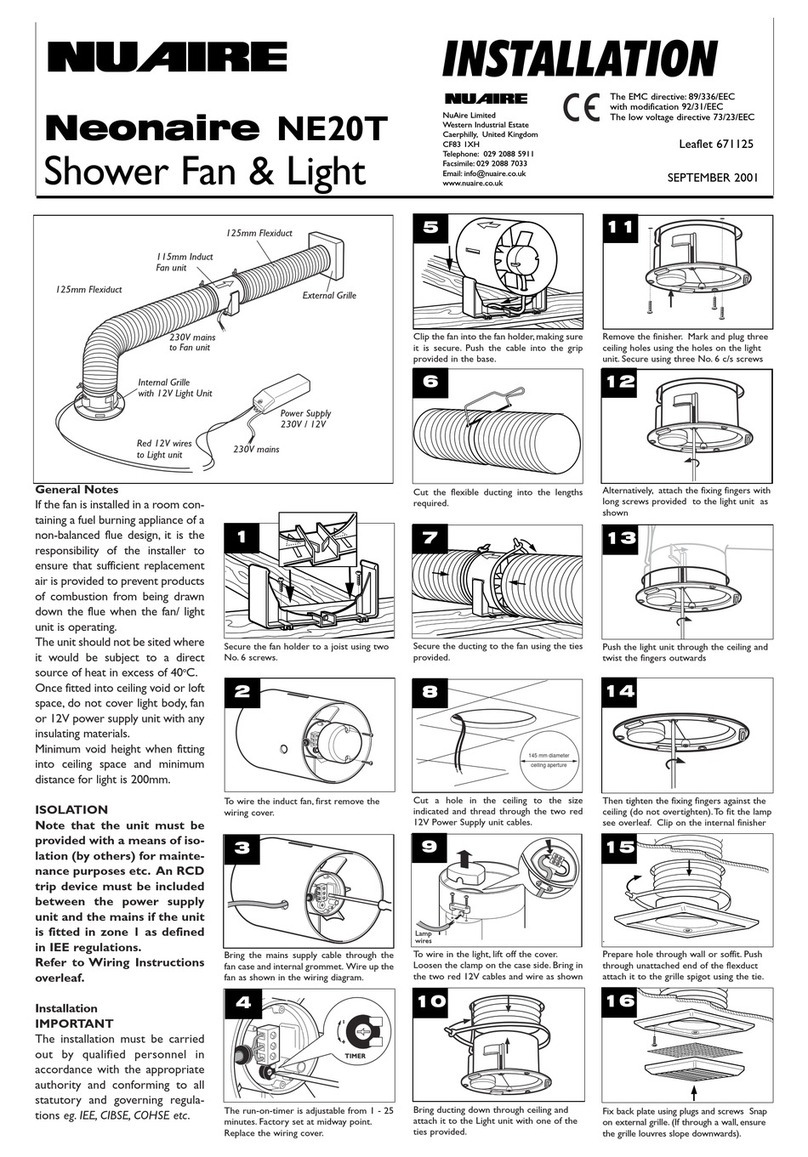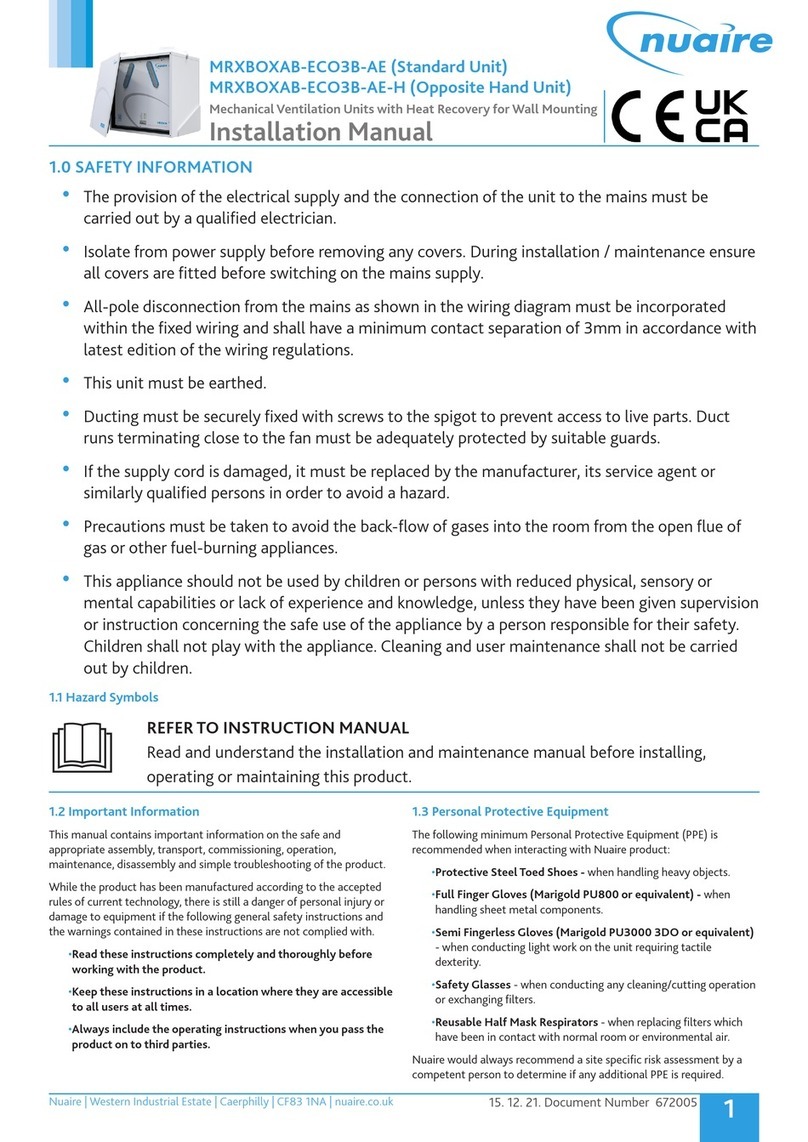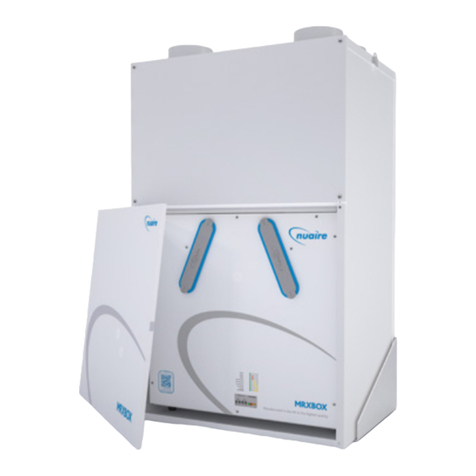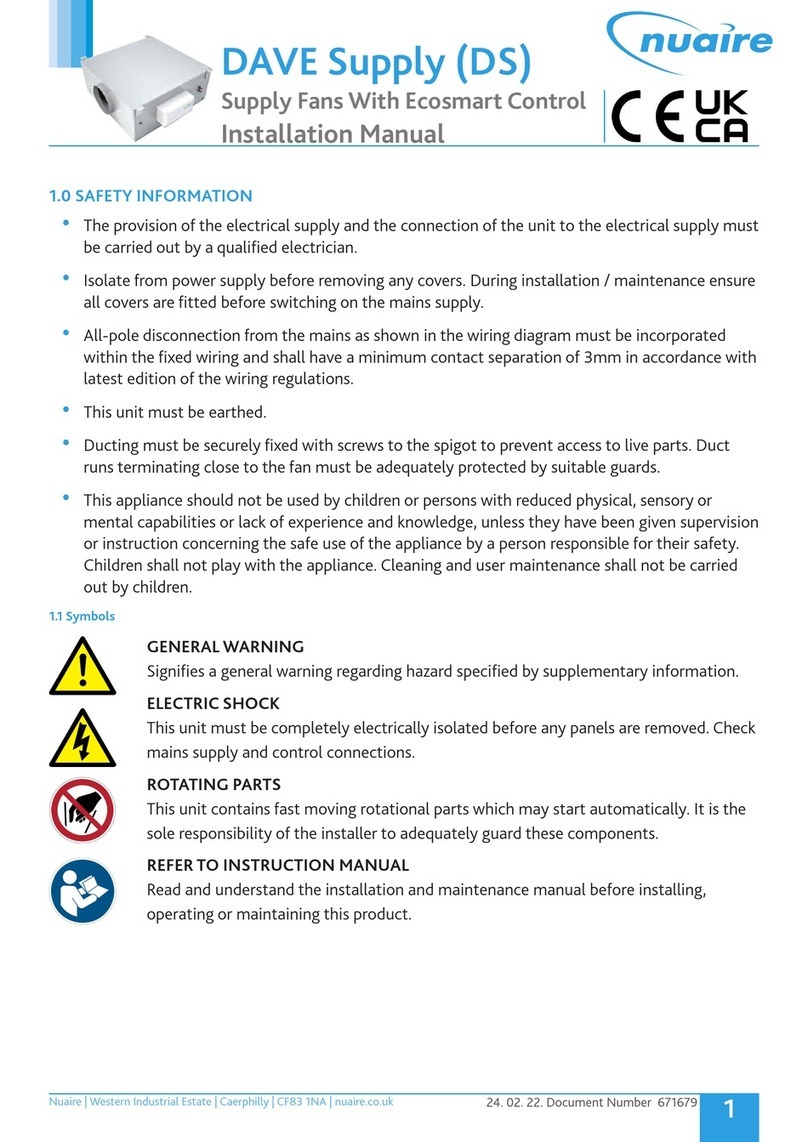
4
15. 06. 23. Document Number 671855Nuaire | Western Industrial Estate | Caerphilly | CF83 1NA |nuaire.co.uk
MRXBOXAB-ECO2-(OH)SWInstallation Manual
Collar
10 MVHR-DRAIN Installation
Condensate drain,
uninsulated drain pipe with
min 5° fall running to SVP.
To SVP
“T” piece
MVHR Drain
To unit
To CONTRAP
11 "T" Piece CONTRAP & MVHR Drain
Connection
When using a “T” Piece to connect the CONTRAP drainage
and the MVHR drain pipework the MVHR drain must always
be fitted before the “T” Piece to prevent condensate from
feeding back into the MVHR system.
3.5 Extract / Input Areas
The unit is designed to extract air from all wet rooms e.g.
bathroom, kitchen, en-suite, utility room (with sink). WC’s do not
need to be ventilated if openable windows are fitted.
Supply air should be to all habitable rooms e.g. bedrooms and
lounge. Extract / input grilles should be adjustable valve types
(not supplied). External grilles are to have a minimum free area of
12,250 sq. mm.
3.6 Ducting
Before commencing ducting installation reference should be
made to the following regulations:
Building Regulation Approved Document F 2010
(2021 Edition - for use in England.
Building Regulation Approved Document F 2010
(2022 Edition - for use in Wales)
Scottish building standards technical handbook 2022:
Domestic - section 3.14 Ventilation
It is recommended that rigid ducting be used at all times. Flexible
ducting has a very high resistance and it is impossible to calculate
how much resistance will be on a system if used.
If used the flexible ducting must be kept to a minimum and should
always be pulled taut. A maximum of 300mm should be used on
each leg.
To prevent condensation on the outside of the outside air inlet
duct and the air outlet duct from the unit, these ducts should be
insulated.
Ducting must be installed in such a way that resistance to airflow
is minimised. Bends should be kept to a minimum.
A minimum distance of 300mm between the appliance and any
bends in ductwork is recommended.
Ideally 150mm diameter or 204 x 60mm rectangular ducting
should be used (Figures 13 & 14).
Ducting joints must be sealed with silicone type sealant and shall
be adequately and reliably fixed to the appliance.
3.7 Ventilation Flow Rates
Table 1 - From ADF 2010 (England & Wales)
Extract Ventilation Rates
Room Minimum High
rate
Minimum Low
Rate
Kitchen 13 l/s
Total extract rate
should be at least
the whole dwelling
ventilation rate
given in table 2.
Utility Room 8 l/s
Bathroom 8 l/s
Sanitary
Accommodation
6 l/s
Table 2 - Whole Dwelling Ventilation Rates
Number Of Bedrooms In Dwelling
1 2 3 4 5
Whole dwelling
ventilation rate
(l/s)
19 25 31 37 43
Notes:
1. In addition, the minimum ventilation rate should be no less than
0.3 l/s per m² of internal floor area. (This includes all floors, e.g.
for a two-story building add the ground and first floor areas).
2. If the dwelling only has one habitable room, a minimum
ventilation rate of 13 l/s should be used.
3. For each additional bedroom add 6 l/s to the values in table 2
Any air intake terminal must be installed in accordance with
the appropriate regulation. As a guide, the BS5440 series of
British Standards deals with this issue and currently states that
an air intake must be at a minimum distance of 300mm from a
gas boiler balanced flue. Installers are advised to be aware of
the requirements of this standard when installing ‘through the
wall’ supply air ducting.
3.8 ADF 2010 Ventilation Calculations Design of MVHR
Systems
1. For dwellings using mechanical ventilation with heat recovery,
each habitable room should have mechanical supply ventilation.
The total supply air flow should be distributed proportionately to
the volume of each habitable room.
2. Mechanical supply terminals should be located and directed to
avoid draughts.
3. The minimum total continuous rate of mechanical ventilation
with heat recovery is the whole dwelling ventilation rate in Table 2
4. For dwellings using mechanical ventilation with heat recovery,
each wet room should have a minimum continuous mechanical
extract ventilation high rate as given in Table 1
5. Mechanical ventilation with heat recovery systems should be
designed to avoid the moist air from the wet rooms recirculating
to the habitable rooms.
6. To avoid unintended air pathways, background ventilators
should not be installed with mechanical ventilation with heat
recovery.

